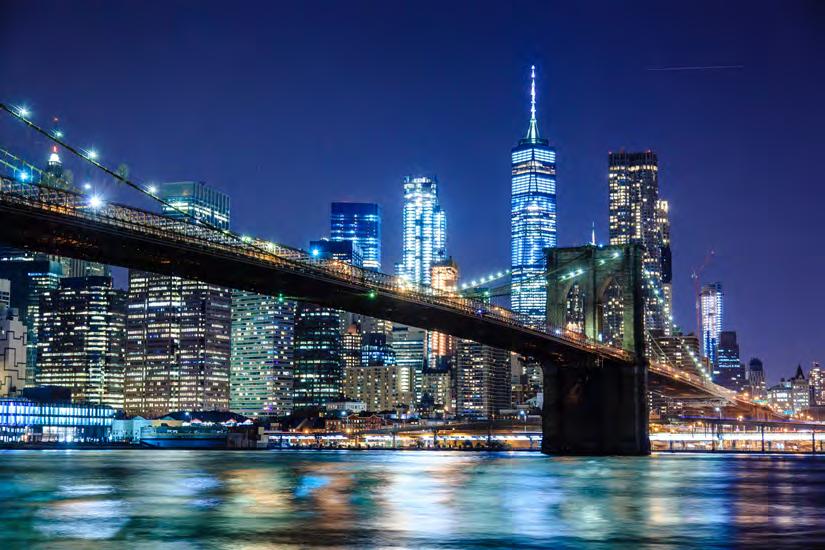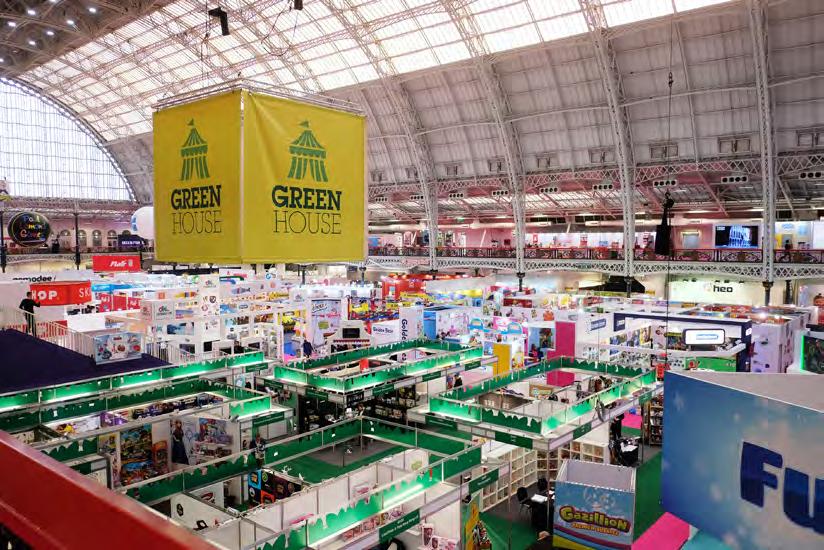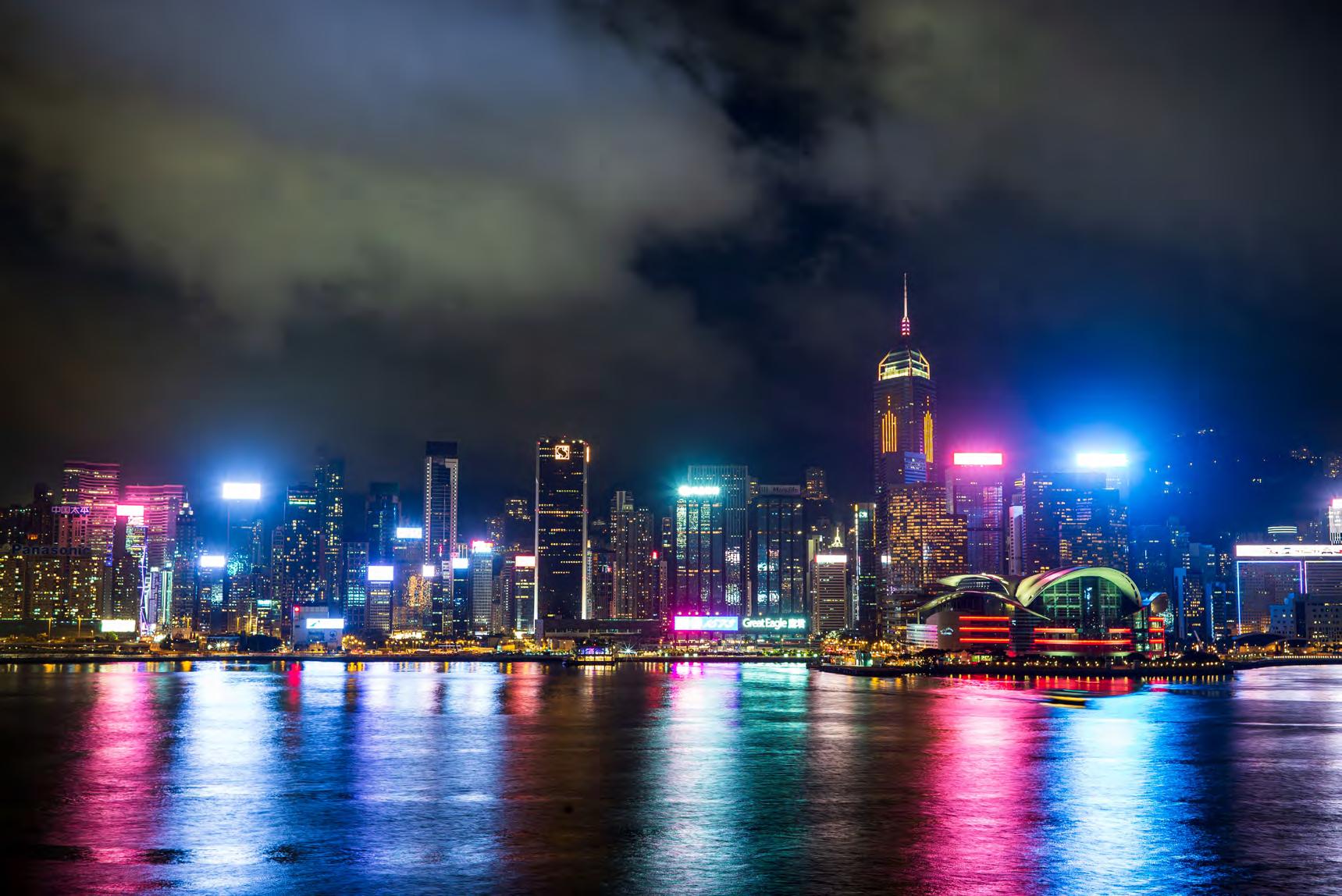
17 minute read
Special Feature - Toy Fair Season
Toy Fair Season. The Great Reset?
After 2023 gets off to a flying start in Q1 with the London and Nuremberg Toy Fairs, just like everyone else, Team Toy World will be watching closely to see what happens with the rest of the trade show calendar. Publisher John Baulch shares his thoughts.
Toy Fair season 2023 is set to look very different from the traditional January/ February period. For starters, the longestablished trip to Hong Kong in the opening days of the New Year is off again this year – at least, for the vast majority of European and American visitors. The Hong Kong Toys and Games Fair will still go ahead, although it is expected to be a largely domestic event this time round, with a reasonable possibility that visitors will also attend from other Asian countries such as Thailand, Malaysia, Indonesia, The Philippines, Singapore and the like. However, not many Chinese visitors are not expected to make the trip, which will inevitably impact the overall attendance.
The timing of the show is unfortunate; just before Christmas, it was announced that Hong Kong would be scrapping the ‘0+3’ arrangement, meaning that visitors who test negative no longer need an amber health code and can enter restaurants and other premises previously off limits to them. Sadly, the move almost certainly came slightly too late for travelers from the international toy community to make last-minute arrangements to visit this month. While Westerners struggle to understand why China hasn’t followed the rest of the world in opening up, the situation there is a little more complex: many older Chinese citizens were reluctant to have the vaccine, while there have been many reports that the Chinese-made Sinovac is not as effective against newer variants of Covid (such as Omicron) as Western vaccines. Indeed, many Westerners living in places like Hong Kong waited until they were offered a Western vaccine, rather than place their faith in Sinovac. While the West has learned to a great extent to live with Covid, the virus is apparently still relatively widespread in China; I spoke to someone recently who told me that as many as one in five businesses in China are either believed be shut, or their operation severely impaired, due to Covid infections. When you take into consideration concerns over the Chinese health service’s ability to cope with a surge in cases, the Chinese conundrum makes more sense. When China and Hong Kong do finally open up to the world, there is a strong chance that Covid cases will soar, placing major strain on Chinese hospitals. Who knows what will happen if that proves to be the case? Nevertheless, there is a strong sense that China has little choice but to accept that lockdown rules need to be relaxed; Chinese citizens watching the World Cup were apparently not shown footage of crowds in stadiums – with no-one wearing masks – for fear of further antagonizing them. The November protests showed that public opinion is already turning against draconian restrictions, and the Chinese government will also take into account the ongoing damage to its global reputation and, crucially, its business infrastructure.
Assuming, therefore, that most restrictions are lifted next spring, what then? This is where we head into the realm of conjecture, and where events in other territories across the globe come into play. We do know that the showroom buildings in Mody Road are not the hives of activity they once were - many companies didn’t renew leases as they expired, with some formerly thriving buildings described as ‘ghost towns’ by local toy community stalwarts. However, some international companies did maintain permanent showrooms in Tsim Sha Tsui, and along with the Toy Fair at the Convention Centre, they will be open for the second week of January.
Of course, some major toy retailers have local buying offices, in particular those retailers who run own label programmes and ranges. Indeed, it is this area which almost everyone I have spoken to acknowledges is hardest to maintain without travelling in person to Hong Kong. The January trip, which started as predominantly an FOB buying trip, had grown to become much more than that; but, post-pandemic, will we see a return to its core function? And will buyers still need to go to Hong Kong several times a year? The jury is out, but the majority verdict from my contacts suggests that one trip a year will suffice – and January is probably the best timing.
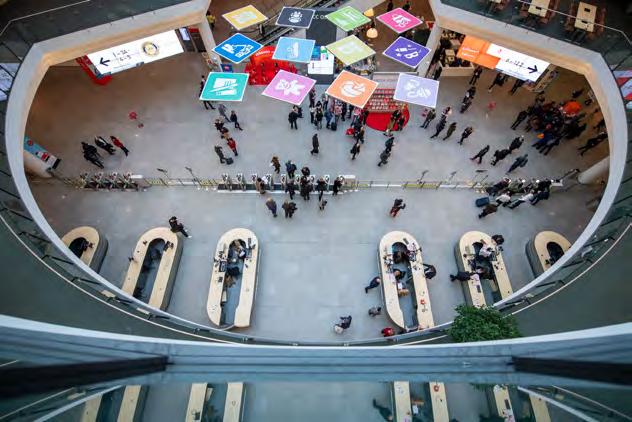
If Hong Kong can get back to what it used to be, providing the perfect set-up for vendors and retailers to see as many customers/ranges as possible in a short space of time, it can yet re-establish its pivotal place in the global toy canon. Never underestimate the resilience of the territory and its people. And never underestimate FOMO – if people start to head back to Hong Kong in numbers, how many others will be able to resist the temptation?
However, there are other factors at play, chiefly over in the USA, and in particular, in Los Angeles. US retailers and vendors were always an integral part of the Hong Kong scene, but some believe they are less likely to return than other international visitors, with the growing importance of LA-based events being cited as the principal reason. Indeed, not only is this impacting international travel plans, but is has also had a seismic impact on the US trade show calendar.
For the first time in 2023, the New York Toy Fair will move from its traditional timing in February to a new slot at the end of September – just after the LA show finishes. Up until now, I have been reluctant to get involved in any debate about the rights and wrongs of the decision. Toy World is focused predominantly on the UK market – had the London Toy Fair decided to move the show by six months, we would have been perfectly placed to comment. By the same token, such a decision by the US Toy Fair is essentially a matter for US suppliers, retailers and trade magazines.
Nevertheless, no show is an island, and every event has an international presence, to a greater or lesser degree. I have had numerous conversations about the move of the New York show and the rise of LA with UK and European suppliers, and whilst I don’t feel comfortable ‘taking sides’, I do feel it might help to offer some thoughts about how the move might impact the toy community outside the US.
First of all, it’s important to remember that it is not possible to achieve universal approval for any move of this magnitude. I have spoken to many people who feel it is categorically the right thing to do, and just as many who are utterly bewildered by the move. Let me attempt to examine the rationale behind the move.
There was a growing belief amongst a section of the US toy community that the February Toy Fair timeline was too late. Indeed, the show traditionally marked the very end of Toy Fair Season, some six weeks after the global toy community first met in Hong Kong. But when people remarked that it was ‘too late’, too late for what exactly? Essentially, to influence selections from America’s largest accounts – Walmart, Target, Amazon, Costco and the like. These retail behemoths always started their selection process long before US specialist retailers, and especially post-pandemic, there was a feeling that final decisions were taken long before the show started.
Exhibiting at Javits isn’t cheap (I have been told by a contact in the exhibition organizing world that it is one of the most expensive venues in the world), and given the large percentage of the toy business held by a handful of major accounts (for many of the larger US toy companies, up to 80-90% from the four retailers listed above), many questioned the commercial viability of a show which didn’t affect the selection decisions of these major players. So far, so understandable.
Canvassing opinion from its members, the Toy Association reached the conclusion that moving the Toy Fair forward from February to the end of September was the best course of action. That way, the show would take place right at the very start of the US major accounts’ selection period, theoretically making key exhibitors feel that investing in the show was worthwhile. However, as I suggested previously, the move was not universally welcomed. Many specialist suppliers and retailers questioned the timing – to start with, the new date will mean moving new product development forward by almost four months, quite a significant task.
It also means that the New York Toy Fair will take place long before the holiday season has even begun. Opinion varies as to whether this matters – some feel that has no bearing on selections, while I find it hard to believe that retailers would lock down orders for the following year without having any idea whatsoever as to what did and didn’t work at Christmas. Either way, the move is a bold one; metaphorically speaking, it sees New York Toy Fair move from the end of the race to the very start of the race…indeed, not just the start of the race, but almost the walk from the dressing room to the track.
Ah, “but what about the LA show” I hear you say? True, that takes place two weeks before New York is scheduled to open its doors. But are a preview event and a Toy Fair the same thing? Or are they two totally different kinds of event, with very different aspirations and strategies? Speaking to some of the companies which exhibit in LA, I was told that significant changes were made to some product ranges as a result of feedback during the previews. After all, isn’t that the whole point of previews? Or at least, it certainly used to be.
I suspect part of the confusion arises from the fact that many people refer to LA as the LA Toy Show –when I’m not actually sure it is a Toy Show at all. First of all, the very nature of US previews means that some ranges won’t even see the light of day if the Walmart or Target buyer doesn’t like them. Fair enough, if that’s how the math (sic) of the US toy market works for US toy companies – thankfully, I suspect that not one account has that kind of power or leverage anywhere else in the world.
Secondly, unlike a traditional Toy Fair which is open and accessible to all, LA is a very exclusive club – it started out as a group of California-based toy companies (less than double figures in number) showing a handful of very major retailers their lines for the following year. It has, of course, expanded significantly. What began as a largely US domestic exercise has turned into a global event. Major buyers from across the world are invited during the second week (as long as Walmart isn’t in the showroom that day – in which case, everyone evacuate…). It has also extended beyond a handful of suppliers; the trip has now become a major destination for global toy distributors to select ranges for the following year, something many previously did in Hong Kong in October.

Inevitably, as LA grew in importance, many smaller suppliers wanted to get a piece of the action, taking hotel rooms nearby in the hope of catching a major buyer while they were in town. That is completely understandable, but also slightly optimistic. Indeed, when speaking to a few people about the LA setup, I got the distinct impression that some of the established toy companies are less than thrilled about everyone from the industry showing up and trying to crash the party. In a way, I can understand that: if buyers are only in town for a week, they can only see a limited number of people. Because – and this, as far as I can tell, is the crucial element – LA is not at all a userfriendly location.
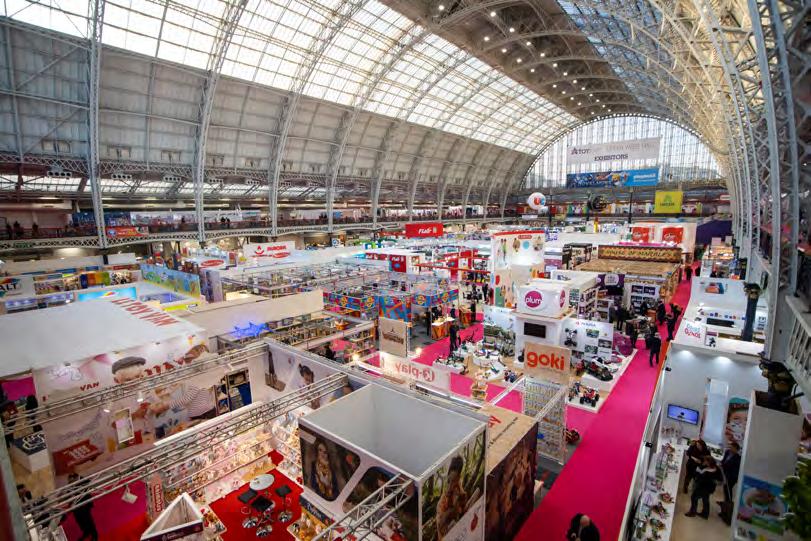
Full disclosure - I have never been to LA, neither for business nor pleasure. That may change soon, but for now, I have to rely on what people tell me. And what they tell me is that getting from showroom to showroom - on time - is a monumental effort. We’re not in TST anymore Toto; showroom buildings aren’t all within walking distance of each other. You either need a car, or a very large Uber credit limit. Some showrooms are up to two hours’ drive from the main pack; on the basis that most of the bigger companies will want to spend at least half a day with buyers (if not more), it is not easy to see 100+ companies in a week, as would have been the case in Hong Kong.
Hence the reluctance of the established toy companies to fight for buyers’ time with an influx of ‘out of towners’. Of course, they can’t stop it; the toy trade has always been quick to follow the circus. If major buyers are going somewhere, anywhere…the seagulls will follow the trawler soon enough.
One answer for companies looking to establish or grow their US business is to take a permanent showroom in LA – as many have previously done in TST or, back in the day, in the New York toy buildings at 200 5th and 1107 Broadway. Spider International’s Jonathan Busher has been working with a local building owner to facilitate such a move for a selection of toy companies, which should see anything up to 20 companies housed in the building come next September. It’s an intriguing option for toy companies that are serious about having a permanent base in the area – not just international companies, but even US companies whose headquarters are located in other parts of the country. It’s not a solution for smaller companies or those looking to take space for just a couple of weeks a year, although facilities like that are almost certain to emerge in the coming years. Character Options is one such company looking for a long-term home, having already set up a huge permanent showroom within the building.
The aim, as I understand is, is to create a destination that will become a hub for toy companies that aren’t already based in LA. It also ticks the box of helping retailers and distributors maximise their time in LA; it will be far easier to sit alongside the current showroom set-up if one venue can accommodate a number of key companies.
On so many levels, turning LA week(s) into a full-blown Toy Fair rather defeats the purpose of it. However, the rise of LA as a draw for the toy community, not just once a year but maybe two or even three times - it seems that the September trip will be supplemented at very least by a further gathering in April moving forward – is likely to have repercussions for Hong Kong, New York and indeed other toy shows around the world.
It is, of course, still early days, and I hesitate to make any definitive predictions about what may happen in the coming years. Next year will give us an inking as to how well the New York Toy Fair will dovetail with the LA event: will the companies which open their doors in LA also decide to pay to exhibit in New York the following week? Will US and international retail buyers have the time to attend both events? Year two should give us more of a definitive sign, as many people will choose to go everywhere next year, partly to evaluate the different opportunities and partly down to our old friend, FOMO.
It's not just the Toy Association which will be watching closely. Both the London and Nuremberg Toy Fairs will benefit hugely this year: with no trip to Hong Kong or New York in Q1, these are the only shows in town. But if the New York Toy Fair move is a success, will the organisers feel pressured in the long term to consider moving their shows earlier?
Never say never…but personally, I am not so sure. As I touched on previously, no other global market is dominated by a couple of large non specialist retailers. The US is an outlier in that respect. I still question how many retailers lock down their selections – i.e. put a confirmed order in writing – before assessing their festive sales trends. I wonder how many toy companies will be able to adapt their product development cycles to fit in with the new timing, and I remain intrigued as to how many companies would happily put new products on show nine months before they are due to ship it – I bet those toy companies which like to take inspiration from what other companies are doing (the copycats) would love that. Again, it’s the difference between a preview and a toy fair – is there more chance of controlling the flow of information in a showroom setting than on a trade show booth?
Despite the fact that, as far as I am aware, both the London and Nuremberg Toy Fair organisers have adopted a ‘wait and see’ strategy, there was even a rumour doing the rounds in the US recently that the Nuremberg Toy Fair would be moving to August in 2024. I am going to go out on a limb and say that feels like complete nonsense to me: would a major European show really going to move to August, when Spain, Italy and France are still in the habit of taking the whole of that month off as holiday? There are many other reasons why I highly doubt any change will be forthcoming, at least until the effect of the move of the New York Toy Fair from February to September is thoroughly evaluated (and I am not at all sure we will get an accurate picture after just one year).
For now, hopefully 2023 will get off to a flying start in Q1 with the London and Nuremberg Toy Fairs. After that, like everyone else, we will be watching closely to see what happens with the rest of the calendar. We have no axe to grind, or specific preference – we don’t have a dog in this particular fight. We tend to go wherever the largest groups of retailers and suppliers congregate – critical mass is the driving factor. I suspect many suppliers and retailers adopt a similar approach when assessing the viability of their own trips.
One thing is for sure: just because the toy industry has done something a certain way for many years is no guarantee that it will continue to do the same thing moving forward - witness the rapid decline of TV advertising this year. Nevertheless, it is just as important that we don’t just change things because one event has decided it is best for them, and also important that we don’t use the same criteria when judging different shows and trips. Hong Kong, London, Nuremberg, New York, LA…. each has a different audience and a different reason to exist. Ultimately, I suspect that ‘survival of the fittest’ will be the order of the day.
